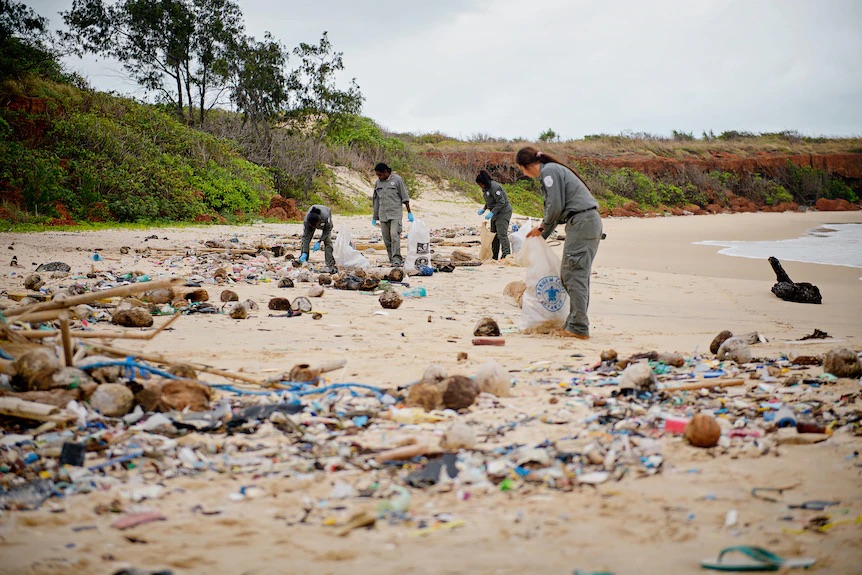
The Plastic Gyre in the Pacific Ocean, often referred to as the Great Pacific Garbage Patch, is an enormous expanse of floating plastic debris. Spanning hundreds of thousands of square miles, this environmental catastrophe poses a significant threat to marine life and the health of our oceans.
-
- The Origin and Scale of the Problem: The Plastic Gyre in the Pacific is the result of years of indiscriminate plastic waste disposal and inefficient waste management systems. It is estimated to cover an area larger than the state of Texas, accumulating millions of tons of plastic debris. This floating mass is primarily composed of non-biodegradable plastics, such as bottles, bags, and fishing nets, which take centuries to break down, persisting as a long-term hazard.
- Environmental Impact and Marine Life: The Plastic Gyre poses a grave threat to marine ecosystems. Large pieces of plastic debris entangle and suffocate marine animals, such as sea turtles and seabirds, while smaller microplastics are often ingested by fish and other marine organisms. This not only causes direct harm but also leads to the bioaccumulation of toxins, disrupting the entire food chain. The fragile balance of marine life is at risk due to this pervasive pollution.
- Innovative Solutions: Addressing the Plastic Gyre requires a multi-faceted approach. Efforts are underway to raise awareness about the consequences of plastic pollution and encourage responsible consumption and waste management. Cleanup initiatives employ specialized vessels equipped with nets and booms to capture and remove plastic debris from the ocean. Additionally, research focuses on developing biodegradable alternatives to single-use plastics and implementing policies to reduce plastic production and promote recycling. Atmospheric Water Generators help to address the cause by reducing the need for supply of water via plastic bottles.
- Individual Action and Global Responsibility: As individuals, we can make a difference by reducing our plastic consumption, opting for reusable alternatives, and properly disposing of plastic waste. However, solving this global issue requires collective responsibility. Governments, industries, and international organizations must collaborate to enact stricter regulations, promote sustainable practices, and invest in the development of eco-friendly materials and waste management infrastructure.
Conclusion: The Plastic Gyre in the Pacific serves as a poignant reminder of the urgent need to address the issue of plastic pollution. Together, we can work towards a cleaner and healthier future for our oceans and marine life.

